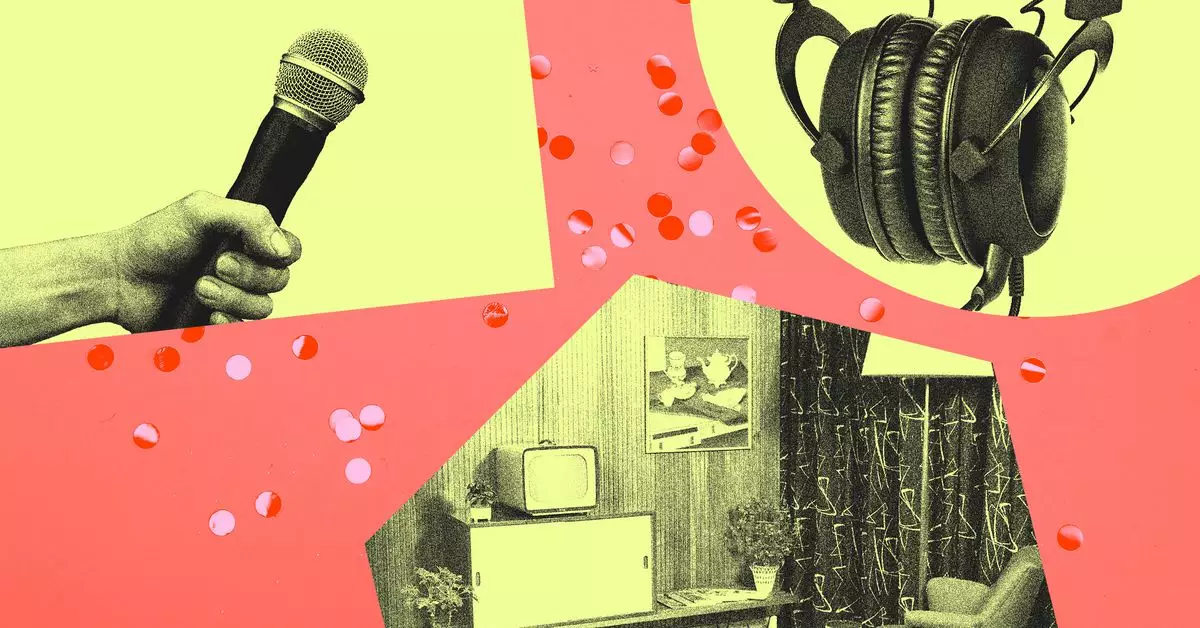As we venture deeper into the digital age, the podcasting landscape is undergoing a significant transformation. With the rise of video-first formats in podcasting, we see a shift that reflects broader audience preferences and technological advancements. In 2024, an ongoing evolution reveals how producers are adapting to meet the needs of an audience increasingly conditioned by visual content. This article delves into the trends shaping video podcasting, the ergonomic designs favored by producers, and what we might expect in the coming years.
Historically, podcasts have been viewed primarily as audio formats. However, as interest in video content surges, many established podcast networks such as NPR and The New York Times are pivoting towards video integration. Spotify’s embrace of video, including financial backing for creators transitioning to this format, signifies the platform’s commitment to innovation in the field. Video podcasts not only cater to a burgeoning consumer base hungry for visual storytelling but also tap into the immense popularity of platforms like TikTok and Instagram, where short and engaging clips dominate.
By allowing producers to simply film hosts and guests during discussions, this format has proven effective at garnering attention. Social media platforms now serve as fertile ground for content derived from audio podcasts, further entwining audio and video mediums in the public consciousness. Producers are thus required to tread a fine line between audio fidelity and compelling video presentation, and in this landscape, innovative production methods are indispensable.
The Aesthetic of Comfort in Podcast Studios
A defining trend in video podcasting is the emphasis on creating a relaxed and inviting studio atmosphere that resembles a living room more than a stark broadcasting studio. This approach enables hosts and guests to engage in longer, more natural conversations. The ambience is often enhanced by the inclusion of decorative elements such as lamps, plants, and bookshelves, which contribute to a comforting visual experience.
Additionally, the layout is evolving. Traditional round tables are being replaced by casual seating arrangements, such as couches and lounge chairs, promoting a sense of leisure. This significant departure from conventional broadcasting formats encourages guests to open up, resulting in engaging and authentic dialogues that resonate with viewers.
The rise of wooden paneling and sound-absorbing materials further enhances the audio quality of these environments without sacrificing aesthetic appeal. Vast, open shots can now capture both the atmosphere and the personalities involved, reinforcing the importance of setting in the narrative structure of podcasts.
As the world of video podcasting continues to flourish, so too do the inherent challenges that accompany this shift. Producers grapple with the awkwardness of conventional setups that include visible microphones and cumbersome headphones. While these elements may enhance audio quality, their prominence in video context often detracts from the visual appeal.
Many productions have opted for handheld microphones, thereby cultivating a more intimate atmosphere. However, this raises potential complications, particularly with guests unfamiliar with microphone techniques or those prone to restlessness. Such dynamics can lead to distracting moments on screen that clash with the polished aesthetic today’s audience expects.
Next, branding has emerged as a pressing concern. Producers are often torn between creating a visually appealing set and ensuring effective brand visibility. The choices they make in placing logos, or the use of microphone flags, speak volumes about how they want to position their program in a crowded market. Yet, these branding efforts should not overshadow the authenticity of conversations taking place on-screen.
The Future Landscape of Podcasting: Anticipating Change in 2025 and Beyond
Looking ahead to 2025, one can foresee a gradual departure from cookie-cutter tropes as podcast producers seek to distinguish their content. The growing discomfort surrounding bulky audio equipment may lead to the adoption of sleeker alternatives, such as lavalier microphones and in-ear monitors, that blend seamlessly into the visual narrative without overwhelming it.
The increasing melding of podcasting and television formats further complicates the landscape. With emerging production tools democratizing content creation, we may witness hosts breaking free from traditional studio constraints and experimenting with diverse locations. Yet, as production costs mount, some may revert to simpler, audio-only formats to sustain their creative endeavors.
Ultimately, while video podcasting presents exciting opportunities, it is crucial for producers to craft original and engaging content that resonates with their audience. The journey of adapting to a video-first world requires not only technical agility but also a steadfast commitment to fostering authentic connections, ensuring podcasting remains a vital medium for storytelling for years to come.

